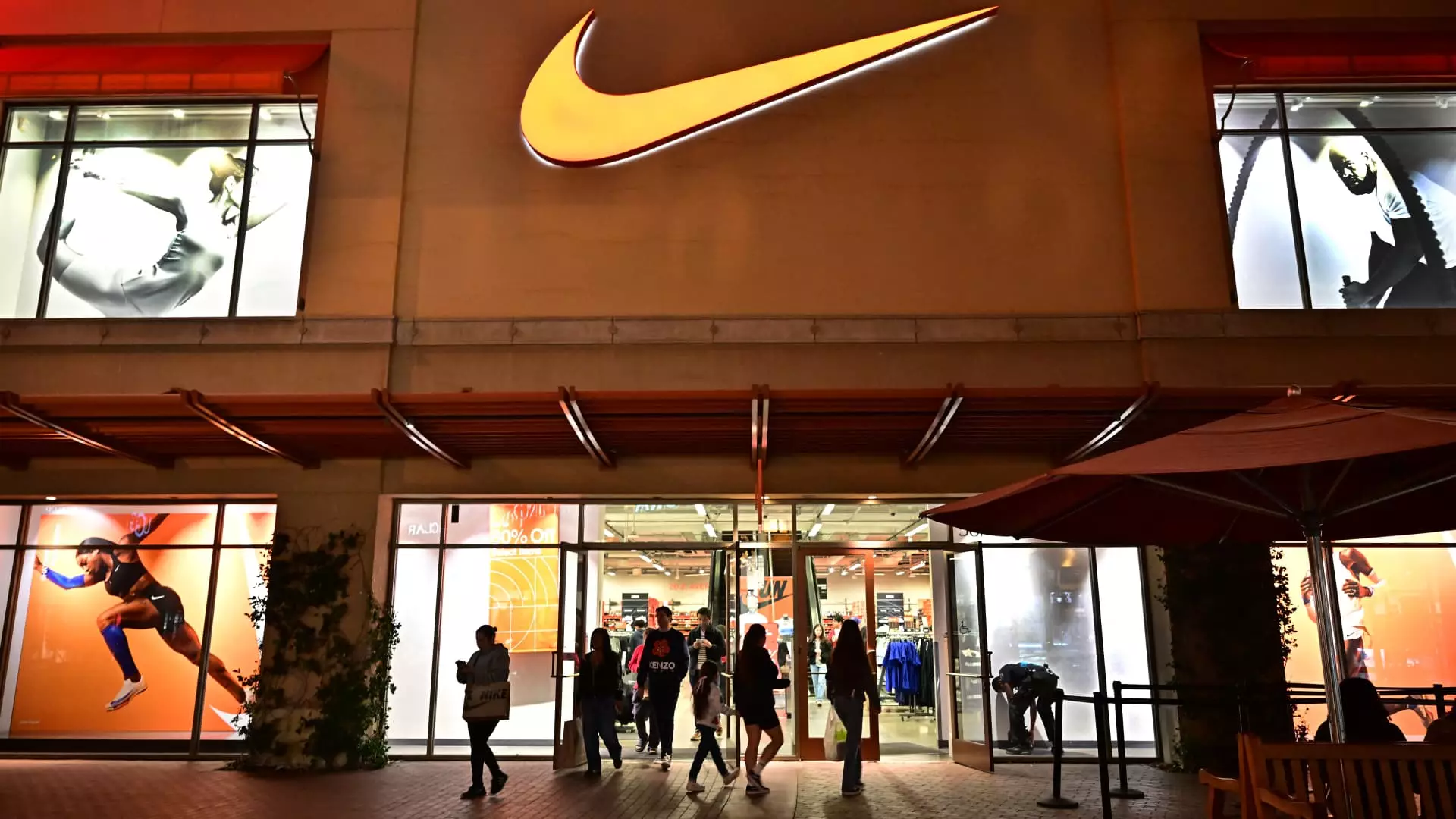Nike has recently reported its fiscal second quarter results for 2025, showcasing a performance that exceeded Wall Street’s expectations despite facing a challenging marketplace. Under the leadership of newly appointed CEO Elliott Hill, the renowned sportswear brand appears committed to recalibrating its strategy to reclaim its position as an industry leader. While the company experienced a decline in year-over-year sales and net income during this period, Hill’s optimistic outlook and proactive initiatives present a potential path to recovery.
In its latest quarter, Nike recorded earnings of 78 cents per share, surpassing analyst expectations of 63 cents. Additionally, revenue reached $12.35 billion, exceeding the forecast of $12.13 billion. Although these figures indicate a commendable response to a volatile market, the reported net income marked a decline from $1.58 billion a year prior, reflecting the struggles that the company faces in terms of sustaining profitability amid shifting consumer preferences and intensified competition.
Taking the reins at Nike, Hill, whose tenure with the company began as an intern decades ago, recognizes the imperative to return the sport to the forefront of Nike’s operations. He emphasized the urgency for “immediate action” to realign the business with its core values. This determination resonates with investors and stakeholders who are keen to see Nike tackle its current challenges head-on.
Hill’s approach involves establishing a refreshed product assortment that addresses the evolving needs of consumers while fostering innovation. Throughout his brief time as CEO, he has recognized the need to reduce production of overly saturated product lines, such as the Air Force 1s, Dunks, and Air Jordan 1s, which have lost their exclusivity and allure. Although this decision may lead to short-term sales setbacks, Hill is banking on the long-term benefits of a strategic supply cut that can reinvigorate brand desirability.
A significant point of concern for Nike is its inventory levels, remaining flat at $8 billion in comparison to the previous year. While the volume of units has increased, the company faces challenges in managing a product mix that aligns with consumer demand. This has ultimately raised questions about inventory optimization and the effectiveness of Nike’s pricing strategy, particularly given the 1 percentage point decline in gross margin attributed to aggressive discounting practices that were essential to clear out surplus stock.
Nike’s direct-to-consumer sales experienced a 13% decline, while wholesale revenues decreased by 3% during the same economic stretch. This dip has raised red flags among analysts, signaling that Nike may need to adjust its approach to maintaining strong relationships with wholesalers who are crucial for distribution.
Nike’s struggles are not occurring in isolation. The competitive landscape has intensified, with rival brands gaining market share at the expense of Nike’s once-dominant position. Foot Locker’s recent disappointing earnings serve as a harbinger of the shifting terrain, as its CEO pointed to weakening demand for Nike products as a contributing factor to the retailer’s struggles. Such market signals indicate a need for Nike to rethink its strategic alliances and distribution tactics.
Moreover, another area of concern has been the performance of Converse, which has recorded a staggering 17% decline in sales after years of integration under Nike’s umbrella. As Converse faces challenges in carving out its brand identity, it raises questions about Nike’s overall portfolio management and long-term brand strategy.
Despite facing these multifaceted challenges, there are signs of rejuvenation within Nike’s operations. One pivotal achievement for Hill has been the renewal of Nike’s exclusive uniform contracts with prominent sports leagues, including the NFL through 2038. This continuous association with major sporting institutions speaks volumes about Nike’s enduring appeal and the potential for reigniting consumer interest through innovative collaborations.
As the company seeks to foster a culture of innovation over the coming months, it is crucial for Nike to position itself as a frontrunner in athletic gear and lifestyle products. Investors and consumers alike are watching closely and hoping for a swift response as Hill leads the charge toward revitalizing the brand’s offerings and reconnecting with its core audience.
While Nike’s recent performance indicates both resilience and concerning trends, the path to recovery is fraught with strategic imperatives. Under the helm of Elliott Hill, Nike must effectively navigate these turbulent waters through a renewed focus on innovation, inventory management, and robust partnerships. Only time will reveal whether these efforts will translate into sustained growth and reinvigorated brand loyalty.

